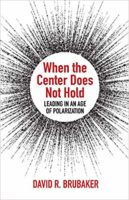
How can congregational leaders make needed changes without incurring wrenching conflict? In my previous post, Why Lone Rangers Always Fail, I stressed the importance of leading change as part of a team. While leading change as part of a Team is the first ingredient in successful change, it is not sufficient. Today I want to add three more ingredients to the mix.
Successful change leaders:
- Set a Tone of invitation and listening that helps to minimize congregational losses.
- Take Time to understand the system and to earn the right to propose change.
- Nest their congregation’s story in the larger sacred story of their Theology.
By Tone, I refer to the tone of the message that the team leading the change effort—and particularly the lead pastor/priest/rabbi—communicates to others in the congregational system. If you want your change efforts to quickly fail, adopt a “You’re either for us or against us!” message. This tone polarizes a group and invites either strong resistance (fight) or immediate departures (flight). A tone that begins with invitation and listening is far more likely to produce a process that leads to sustainable change.
Over time, the most useful stance for change leaders is one that “invites disagreement.” Having listened and consulted broadly, the leadership team eventually begins to sense a shared direction. As the team begins to articulate this direction, however, they are advised to do so in a way that continues to invite disagreement. This permits those members who disagree with the proposed direction to choose the option of “voice” rather than “exit” from the congregation. Congregational losses tend to be minimal when there is a deep respect for those who disagree with the new direction—rather than a disrespectful dismissal of their concerns. Tone matters.
Time is a reminder that every successful change leader has to “earn the right to make change.” For new leaders this normally requires a year or two of building relational capital. In a broadly perceived emergency, however, (such as a high-intensity conflict that leads to many departures) an incoming interim leader is often exempted from this requirement.
For most congregational leaders, earning the right to make change will include not only learning relational networks but also learning the history, culture, and structure of the congregation itself. The Alcoholics Anonymous adage that “we can’t change what we won’t name” applies as much to congregational change as it does to personal change. If congregational leaders are unable to understand and articulate the congregation’s stories, saints and setbacks, they will also be unable to propose changes that are congruent with the congregation’s deepest self-understanding.
“Earning the right to make change” takes time not just because we must build relational capital. It takes time because we must also deeply understand the system we are trying to change. Time matters.
Theology in this context has to do with nesting our congregation’s story in the larger sacred story, which provides credibility and meaning-making for people who resonate with that story. One of the most effective writers on managing personal and organizational transitions, William Bridges, immerses his readers in the compelling story of the Exodus of the Children of Israel from Egypt. This normalizes the resistance that tends to accompany every significant change process, as we remember that the people whined about the leaders who led them out “into the desert to die.” Not surprisingly, they want to go back to Egypt.
But sacred stories have utility for much more than reminding us that during change processes things tend to get worse before they get better. Torah and Biblical teachings and narratives also serve to provide direction for our change efforts and point to processes and skills that enable successful change.
For Christian congregations, the book of Acts is a powerful narrative about the spread of the Jesus movement to include groups outside of the original disciples (Aramaic-speaking Jews from Galilee). As first Greek-speaking Jews and then Gentiles chose to also follow Jesus the early church is confronted with wrenching questions of inclusion. How will food and authority be shared beyond the original followers? How Jewish do Gentile believers have to become in order to be fully accepted in the Jesus movement?
James, the apparent chair of the Jerusalem Council as recorded in Acts 15, responds to concerns about the full inclusion of Gentile believers by citing a sacred text—the prophet Joel. James quotes Joel’s prophesy that David’s fallen tent will be restored so that “the rest of humanity may seek the Lord, even all the Gentiles who bear my name (Acts 15:17).” Thus, James powerfully nests the Council’s call for full acceptance of Gentiles in the prophetic narrative.
Demands for congregational change embedded in post-modern or individual rights language may be compelling to some, but if we truly want our congregations to transform the trajectory of their current stories we will need to help them nest that narrative change in the broader sacred story. Theology matters.
Virtually every congregational leader I’ve engaged with in the last decade has acknowledged that “congregations need to change.” Dramatic cultural, technological, and social changes in the broader environment are impacting every religious system in North America. Congregations that fail to make adaptive changes (in ways congruent with their own beliefs and values) are at risk of being “selected out.”
But as I wrote in Why Lone Rangers Always Fail: “If we want to be successful in our efforts to transform our congregations… we will never attempt to do it alone.” When ordained leaders partner with key lay leaders who represent diverse perspectives in the congregation, successful change becomes much more likely.
Why do Lone Rangers always fail? Not only because they refuse to form a Team, but also because of their Tone (“my way or the highway”) and their failure to consider either Time or Theology as significant variables in the change process.
If we want to be successful in our efforts to transform our congregations, we will never attempt to do it alone, we will set an invitational tone, we will take the time to learn the system, and we will nest our community’s need for change in the sacred stories of our own religious tradition.
This article first appeared in Perspectives in 2014.
David Brubaker has consulted with organizations and congregations in the U.S. and a dozen other countries on organizational development and conflict transformation. He is the author of Promise and Peril, on managing change and conflict in congregations, and When the Center Does Not Hold, on leading in an age of polarization. David serves as Dean of the School of Social Sciences and Professions at Eastern Mennonite University and is a professor of organizational studies.


